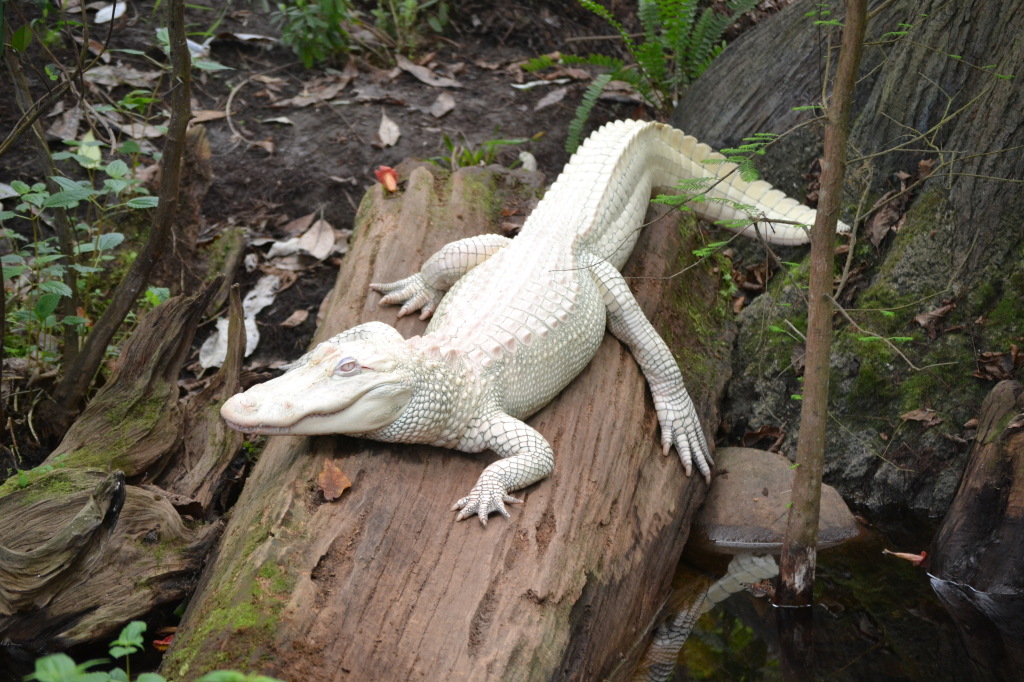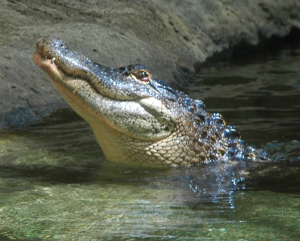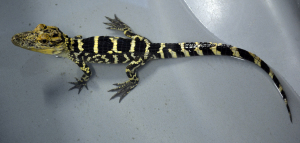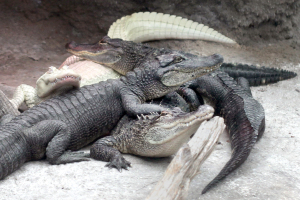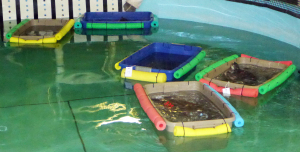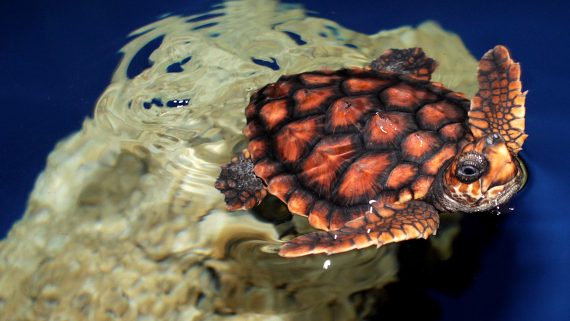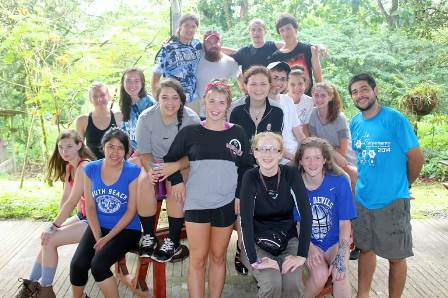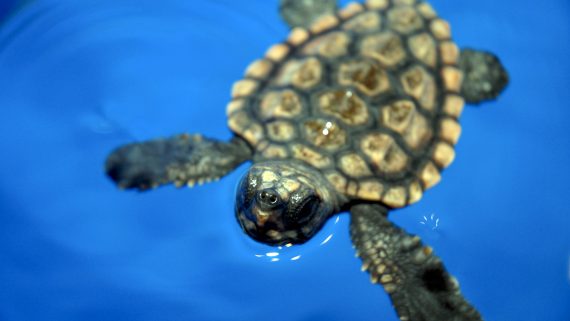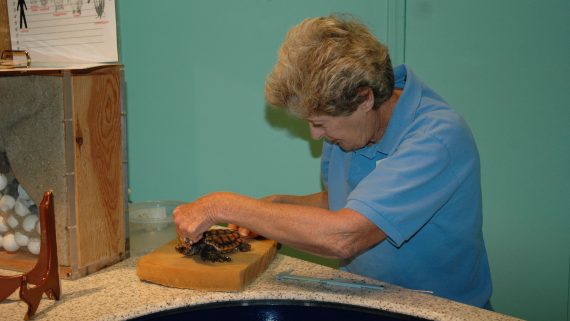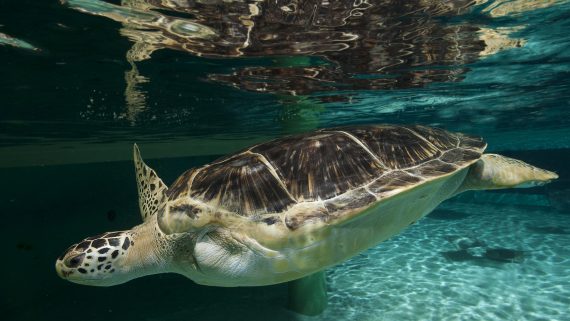See You Later Alligator!
This week we are talking about a relative of the sea turtle: the alligator! Want to know how they’re related? Check out our lesson Reptilian Requirements. In North Carolina, we are very lucky to see Alligators in our backyard because we are at the northern part of their range. Alligators are much more prevalent in southern states, especially Florida, where the state reptile is the American Alligator. However, their range reaches from North Carolina down to Texas. A good habitat for alligators includes swamps, rivers, lakes or ponds where they can eat animals such as fish, turtles, mammals, birds and other reptiles.
Alligators are usually black in color and are covered with bony plates called scutes. These scutes act as the alligator’s own personal solar panel by absorbing the sun’s warmth, helping raise their body temperature so they can perform daily functions. The average size of an adult female and male alligator in North Carolina is about 8 feet and 11 feet respectively, however they can get larger. They reach maturity when they are about six feet in length or about 10-12 years old. When females are ready to lay their eggs, they build a large nest and lay 20-50 eggs, in which she covers with brush and protects. The gender of the babies is determined by the temperature at which the eggs incubate. If the nest incubate at 93°F or higher, the hatchlings tend to be males, if it’s below 86 °F they tend to be female. Temperatures that are in between will produce both sexes. When the babies hatch, the mom aggressively defends her babies and even carries them in her mouth and on her back. However, most of her babies will be preyed upon by other predators. The young that survive can live about 35-50 years in the wild.
Not too long ago, alligators were on the brink of extinction. Today they have made a comeback. Even with their increased numbers, they are still a protected species in North Carolina and are listed as a “threatened” species. Therefore, alligators still need our help so they can be around for generations. Since alligators live mostly in freshwater, you can help keep their habitat clean by being aware of what chemicals you put on your grass/garden to keep it green. When it rains, runoff filled with chemicals and fertilizers can make it to your local streams and lakes where alligators may live. You can learn what products are environmentally friendly by using the Good Guide App for your smart phone.
Another way you can help alligators is by making sure that there is actually a habitat for them to call home. A huge threat to alligators is habitat loss, which is why we occasionally hear news reports of alligators in urban areas. You can create a wildlife habitat in your backyard that protects all of our local animals. Learn more about wildlife habitats here.
Another way you can protect alligators is by making sure you don’t feed them. Unfortunately this causes the alligators to associate people with food. Alligators are perfectly capable of hunting on their own, so to keep people and alligators safe, do not feed them. If you encounter them in an area where they are not supposed to be, please contact your local wildlife official.
Four alligators live at the Aquarium: an albino alligator, Luna; two other females and one male. Their exhibit is located in the Freshwater Conservatory. Make sure you visit our alligators at the aquarium and while you’re here, take time to meet our loggerhead hatchlings.This week Turtle A is 12.3 centimeters long and weighs 331.3 grams. Turtle B is 13.1 centimeters long and weighs 394.1 grams. Not sure what to do with this weight and length? Learn more in our Hatchling to Yearling lesson plan.
We were very excited to release all but five of our cold stunned turtles this week! Hopefully the rest will recover soon and join their friends back out in the ocean.


